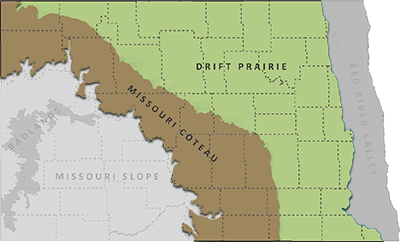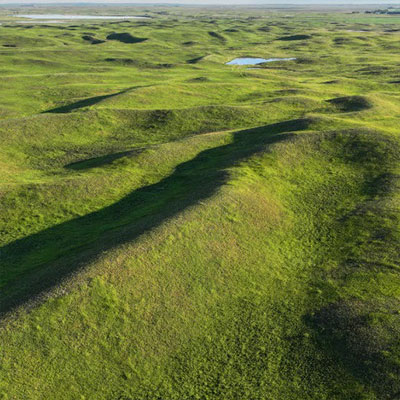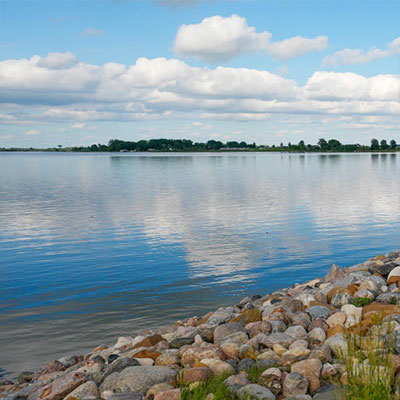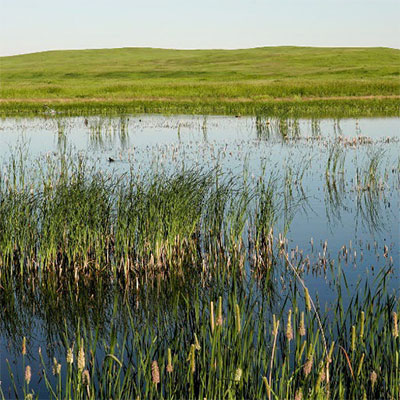Willet

NDGF
L 18”, WS 30”, 13 oz. L 15”, WS 26”, 8 oz. Gray overall except for striking black and white wings obvious in flight.
Status in North Dakota
Occurs in North Dakota from mid-April to late September. Peak breeding season mid-May to late June.
Reason for SWAP Designation
At-risk, ND range important (SGCN b.).
ND ranks 4th out of 30 states for highest percent of the global population (6.47%) during the breeding season (eBird).
The Willet is declining, and ND has high stewardship responsibility for the population breeding inland in the western states, T. s. inornata.
Threats
Loss of grassland and grassland/wetland complexes.
Loss and degradation of wetlands, drainage and wetland consolidation.
Hydrologic shifts in wetlands of the PPR due to wetland consolidation and drainage, climate and land use changes (i.e.
lakeification).
Classified as climate-endangered, Willet is projected to lose more than half of its current distribution by 2050, with no net gains of new areas (Audubon).
Increasing applications of agrochemicals and adverse impacts to water quality, the wetland vegetative community, and the aquatic invertebrate community.
Early mowing can destroy nests or kill the adult on the nest.
Collisions with overhead lines and wind turbines.
Research and Monitoring
Habitat requirements and demographics have been broadly researched on the breeding grounds.
Little known about annual adult survival or fledgling survival.
Information lacking on migration strategies, stopover sites, and wintering behaviors.
The Breeding Bird Survey, eBird and Partners in Flight Databases are key sources of information on distribution and population trends.
Management Recommendations
- Protect and conserve large, intact tracks of native prairie/unbroken grassland and wetland complexes.
- Reconstruct or restore grassland adjacent to existing tracts of native prairie/unbroken grassland.
- Restore hydrology and vegetation to degraded wetlands.
- Use native grasses when replanting or restoring grassland.
- Burn, mow, and graze grasslands to provide areas of shorter, sparser vegetation.
- Minimize pesticide and herbicide use on grasslands.
- Remove tall, dense vegetation in the fall by using haying and grazing.
- Prevent or remove shrubs and tall woody vegetation in grasslands, either mechanically or by prescribed fire.
- Follow beneficial or best practices during the design, siting, construction, operation, and maintenance of tall structures (e.g. transmission lines, communication towers, wind turbines).





